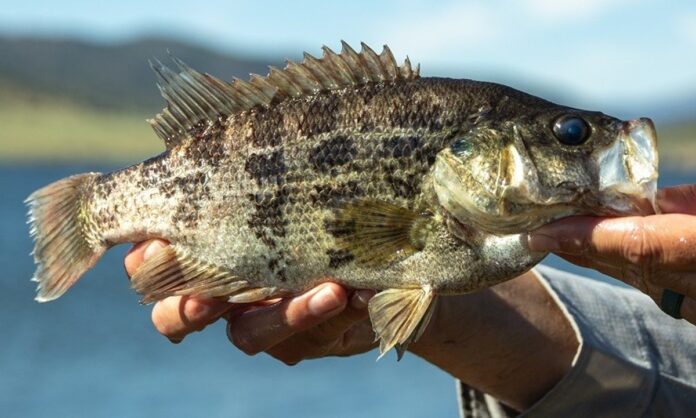
The County of San Diego Parks and Recreation in partnership with the California Department of Fish and Wildlife has introduced Sacramento perch to Lindo Lake in Lakeside to establish the first population of Sacramento perch in Southern California and to create a unique urban fishing opportunity in the future. Thirty-seven juvenile Sacramento perch collected from Bridgeport Reservoir in Mono County were release on Aug. 10 to the recently restored and renovated Lindo Lake east basin, the second stocking of Sacramento perch into Lindo Lake as thousands of larval Sacramento perch were released there last year. Over the next two years, the CDFW will conduct additional translocations from Bridgeport to supplement the Lindo Lake fishery.
Today, Sacramento perch are a “species of special concern” in California and are found in only about two dozen isolated waters mostly in remote parts of northern California and along the Eastern Sierra. Sacramento perch are California’s only native species of sunfish and the only native sunfish west of the Rocky Mountains. Once found in abundance within the Sacramento-San Joaquin Delta and Clear Lake in northern California, Sacramento perch have been displaced from their historical range as the result of competition from non-native sunfish, including bluegill and green sunfish, that were widely introduced into California in the early 20th century.
“We’re grateful to the County of San Diego for welcoming this unique native species to Southern California and Lindo Lake County Park specifically,” said Max Fish, senior environmental scientist for CDFW in a press release. “This is an exciting introduction that’s part of a much broader, three-year effort. We’re working to make sure our existing populations of Sacramento perch continue to thrive, enhancing the genetics where we can, and we’re looking to expand the range both in terms of conservation populations as well as creating new recreational fisheries.”













